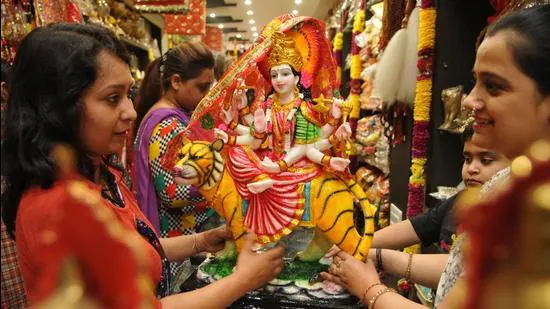When the pujari (priest) at the Durga temple in Madurai fell ill and could no longer perform the ritual pujas, his only child, a daughter, Pinniyakkal, stepped up. Two years later, when he died in 2006, she staked her claim to be the full-time pujari, a hereditary position at that temple

Representational Image. (HT archive)
When the pujari (priest) at the Durga temple in Nalluthevanpatti village, Madurai, fell ill and could no longer perform the ritual pujas, his only child, a daughter, Pinniyakkal, stepped up. Two years later, when he died in 2006, she staked her claim to be the full-time pujari, a hereditary position at that temple.
The local populace was appalled. Even though the temple deity was female, tradition dictated the pujari could only be male. So, Pinniyakkal went to court. Agreeing with her claim, Justice K Chandru of the Madras high court ruled: “The altars of the God must be free from gender bias.”
Some 15 years later, the Dravida Munnetra Kazhagam (DMK)’s state minister of temple administration announced earlier this week that women — and non-Brahmins — can apply for positions as temple priests, provided they have undergone training in “agama sastra”, the manual that lays down rituals of prayer and worship. “Women must be given opportunities to participate in every sphere of life, whether spiritual or material,” Justice Chandru, who retired in 2013, said to me on the phone.
Also Read | In their quest for power, UP’s Brahmins keep parties guessing about 2022
The idea of women and non-Brahmin priests is not new. In 2006, the DMK set up training centres for non-Brahmins. In Maharashtra, training centres for women were first established in Pune and Ahmednagar. In Mumbai, Anjali Kale, now 82, founded the Rudrani Purohita Mandal in 1990 and has trained 250 women priests, including her daughter Kshama Mangesh Joglekar, who has a day job at the Life Insurance Corporation. “I sought her out because I believe that if women don’t support women then who will?” said Dr Manisha Nadkarni, a Mumbai-based gynaecologist who has been using Joglekar’s services for over a decade.
Scholars say Hinduism does not ban women from becoming priests. But over time, patriarchal notions have seeped into some practices —prohibitions on women during “impure” menstruation, for instance. These are being challenged by younger feminists and the Sabarimala judgment that lifted the ban on women of menstruating age was hailed as a landmark in feminist jurisprudence.
Women priests are adapting to changing times but are treading with caution. When couples ask Mumbai-based Anagha Mule, 70, to officiate at their weddings, they often ask her to do away with rituals they find abhorrent: The bridegroom’s feet being washed by the bride’s mother, or the kanyadaan. She is happy to accommodate those requests. “I understand that a woman is not a thing to be given away,” she said. But, if she’s asked to do puja at a home that already has a male family priest, she won’t go as she doesn’t want to take away another person’s livelihood, she added.
While a growing number of women are finding acceptance as private priests who conduct rituals, they are almost never seen in the larger, public temples. Now, the Tamil Nadu government has acknowledged their right to do so. It’s not as if women are waiting to storm the breach, but the move certainly signals the beginning of the end of another male stronghold.
Namita Bhandare writes on gender
The views expressed are personal